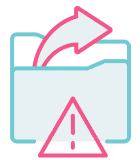SaaS Security Challenges
ServiceTitan needed a security solution that kept pace with its rapid growth and decentralized adoption of SaaS. The security team needed deeper visibility into how core applications were configured, how data flowed within and across these tools, how data was shared with external collaborators, and which third-party SaaS applications had access. This lack of visibility hindered the team's ability to implement and enforce consistent security best practices.
To address these challenges, the company invested significant manual effort in vetting new tools, understanding employee needs, and ensuring security compliance. This approach was time-consuming and inefficient. The need for a more proactive, continuous solution became evident as ServiceTitan sought to gain better visibility into its SaaS environment and manage risk related to data security, non-human identities, and third-party access.
Moreover, the distributed ownership of SaaS applications across various business units also posed security risks. With over a dozen core SaaS applications managed by different teams, ServiceTitan needed a better way to coordinate security efforts and ensure consistent practices.
ServiceTitan’s SaaS Environment
ServiceTitan relies on a robust SaaS ecosystem to support its operations. Key applications include Microsoft 365 (including OneDrive and SharePoint), Google Workspace, Zoom, Okta, Atlassian, GitHub, Salesforce, SentinelOne, Workday, Snowflake, and Slack. These tools are essential for various functions such as communication, collaboration, identity management, security, human resources, and data management.





















